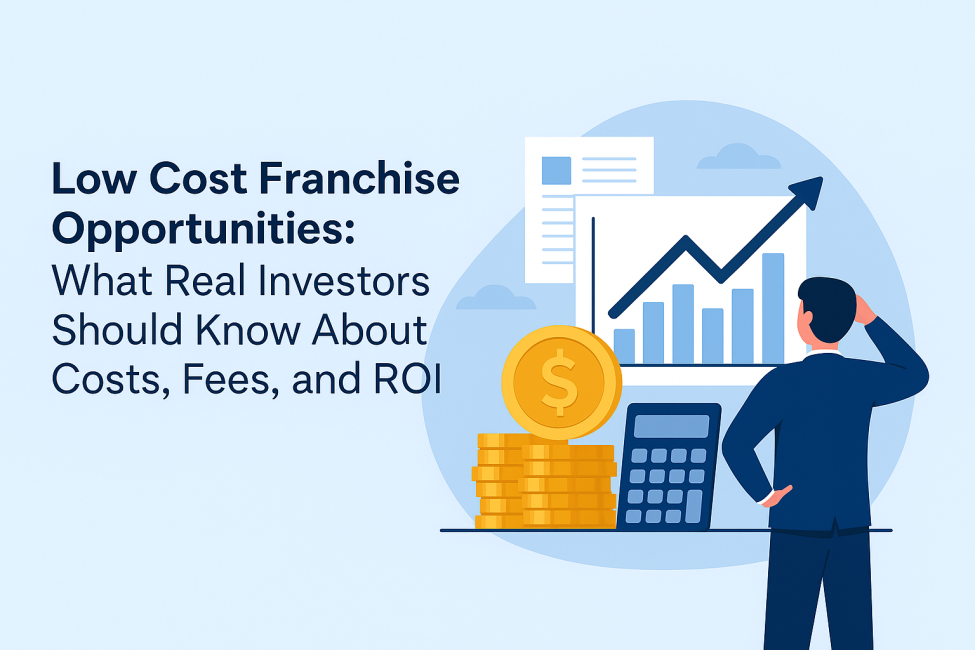Owning a business is a goal for many professionals, but starting from scratch can be risky. Franchising offers a way to invest in a proven system with built-in support and brand recognition. Still, the key question for most investors is the same: what does it really cost?
Low cost franchise opportunities can open the door to ownership without the high startup expenses of retail or restaurant models. But not all low-cost franchises deliver the same return. Some require long hours and daily involvement, while others allow you to lead, scale, and build value. Understanding how costs and returns align helps identify which opportunities are truly worth pursuing.
What Low Cost Really Means
A franchise’s cost goes beyond the initial fee. The total investment includes startup expenses, royalties, marketing contributions, and operational costs. True low-cost opportunities are not only affordable upfront but also efficient to run and scalable long term.
Before investing, smart candidates look at the full picture: franchise fees and royalties, operational expenses, time commitment, staffing requirements, and long-term revenue potential.
A lower initial cost can look attractive, but if the model demands constant hands-on management, it may limit both growth and flexibility.
Finding Value In The Model
The best low-cost franchises combine strong systems, low overhead, and recurring revenue potential. Executive-style models like the Jantize Area Developer opportunity fit this approach.
This model is built for professionals who want to run a scalable business, not manage day-to-day operations. Area developers oversee a defined territory, recruit and support local franchise owners, and generate recurring income through their network’s performance. It offers leadership and growth potential without daily service involvement.
Why Structure Matters
When evaluating franchises, it is easy to focus on brand recognition or industry. But structure often determines success more than anything else.
Some franchises rely heavily on the owner’s personal time and labor, which limits scalability. Others, like the Jantize model, emphasize business development and leadership.
A well-designed structure allows owners to expand steadily, delegate effectively, and build multiple income streams. This protects the business and positions it for long-term success.
Understanding ROI In Franchising
Return on investment in a franchise comes from both financial and lifestyle benefits. Beyond profit, strong franchise models offer flexibility, freedom, and lasting equity.
For area developers, ROI often includes residual income from franchisee success, scalable revenue across territories, consistent cash flow, and the ability to grow without daily service involvement.
This approach appeals to executives, managers, and entrepreneurs who want ownership that operates at a higher level.
How To Evaluate Real Opportunity
Before investing, consider three key questions.
- Does the model align with your leadership style and lifestyle goals?
- How does the system support growth while protecting your investment?
- Can the business scale without constant personal oversight?
If the answer to all three is yes, you are likely looking at a model designed for sustainable success.
A Smarter Path To Ownership
Low cost franchise opportunities are not about finding the cheapest business. They are about finding the most efficient way to build long-term value.
A model that blends affordability, scalability, and professional leadership potential provides both security and growth.
The Jantize Area Developer model gives investors the chance to own a real business with structure, support, and recurring revenue potential. It is built for professionals who want to operate as business leaders, not operators, and who value growth that lasts.
For those exploring franchise ownership, this model represents a smarter way to invest, one that balances cost, time, and opportunity.
 Jantize
Jantize 
